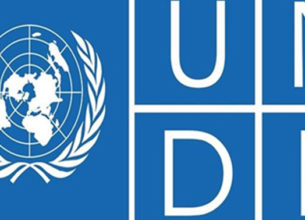HUMAN DEVELOPMENT AND INDIA
12, Dec 2019

Human development is defined as the process of enlarging people’s freedoms and opportunities and improving their well-being. Human development is about the real freedom and ability of the ordinary people to decide – who to be, what to do, and how to live.
Human development focuses on improving the lives people lead rather than assuming that economic growth will lead, automatically, to greater wellbeing for all. Income growth is seen as a means to development, rather than an end in itself.
Historical Journey of Human Development Philosophy:
- Aristotle gave the idea that wealth is only a means to achieve something else, not an end in itself.
- Kautalya in his Arthashastra has written about social welfare as an important duty of the king.
- The early founders of quantitative economics expressed their concern in economic development for better lifestyle and mainstreaming of the poor.
- The importance of wealth magnified with imperialism and colonialism. Ultimately 20th century witnessed a wild craze for wealth, income, GNP and GDP.
- The experience of developing countries proved that income growth does not solve the problems of mass poverty and this highlighted the other dimensions of development.
- Due to this, the concept of social development came into existence, which emphasises the development of the totality of society, in the economic, political, social and cultural aspects.
- Human development concept is closely related to these two (Social development and economic development) but its particular emphasis is on the quality of life of every individual, group or community.

Is there any clash between Wealth Maximization and Human Development?
- All human choices do not need wealth.
- The national wealth may not bring about wellbeing and if it is not evenly distributed or if the priorities of the planner are wrong.
- “A society does not have to be rich to afford democracy. A family does not have to be wealthy to respect the rights of each member. A nation does not have to be affluent to treat woman and man equally”
Central to the human development approach is the concept of capabilities. Capabilities—what people can do and what they can become-are the equipment one has to pursue a life of value.
United Nations Human Development Index (HDI):
- The Human Development Index (HDI) was created to emphasize that expanding human choices should be the ultimate criteria for assessing development results.
- The human development approach, developed by the economist Mahbub Ul Haq, is anchored in the Nobel laureate Amartya Sen’s work on human capabilities. It had the explicit purpose “to shift the focus of development economics from national income accounting to people-centred policies”.
What does the Human Development Index tell us?
- The HDI can also be used to question national policy choices, like – how two countries with the same level of GNI per capita can end up with different human development outcomes.
- For example, Malaysia has GNI per capita higher than Chile, but in Malaysia, life expectancy at birth is four years shorter and expecting years of schooling is 3 years less than in Chile, resulting in Chile having a higher HDI value than Malaysia. These contrasts can stimulate debate about government policy priorities.
Why does the GNI per capita is expressed in purchasing power parity (PPP $)?
- GNI per capita (PPP $) better reflects people’s living standards uniformly.
- In theory, 1 PPP dollar (or international dollar) has the same purchasing power in the domestic economy of a country as $1 (USD) has in the US economy.

Human Development is ranked on a scale from 0 to 1.0:
- 0.8 to 1.0 – Very High Human Development
- 0.7 to 0.79 – High Human Development
- 0.55 to 0.70 – Medium Human Development
- Less than 0.55 – Low Human Development
Very High Human Development Countries:
- Have stable governments
- Better health & education
- High life expectancies
- High economic growth
Low Human Development countries:
- Have unstable government
- Has poverty
- Poor education, & healthcare facilities
- Lower economic growth & low income
Why does the HDI not include dimensions of participation, gender and Equality?
- As a simple summary index, the HDI is designed to reflect average achievements in three basic aspects of human development.
- Instead of bringing additional dimensions and indicators into the HDI, other composite indices were introduced –
- 1.Inequality-adjusted HDI
- 2.Gender Inequality Index
- 3.Gender Development Index.
Application of ‘Law of Diminishing Returns’:
- The law of diminishing returns states that in all productive processes, adding more of one factor of production, while holding all others constant (“ceteris paribus”), will at some point yield lower incremental per-unit returns.
- The principle has been applied only to the income indicator.
- There are arguments for and against transforming the health and education variables to account for diminishing returns.
- Income is instrumental to human development, but the contribution diminishes as incomes rise.
- A high income without being translated into other human development outcomes is of less relevance for human development.
- Therefore, by fixing the maximum at $75,000, the higher income (earned above $75,000) is prevented from dominating the HDI value.
- Currently we have only four countries with GNI per capita above the cap – Brunei Darussalam, Liechtenstein, Qatar, and Singapore.
Human Development Index – 2019:
- In 2019 report, India has improved its rank to 129 among 189 countries. With the HDI value of 0.647, India has made significant improvements in the basic dimensions of human development – a long and healthy life, access to knowledge and a decent standard of living.
- As per the report, the overall trend globally is also towards continued human development improvements as several countries have moved up through the human development categories.
- Dealing with the Inequality – The report this year has analysed the rising inequality worldwide. The report points to the fact that, just as the gap in basic living standards is narrowing for millions of people, the necessities to thrive have also evolved.
- Despite global progress in tackling poverty, hunger and disease, a “new generation of inequalities” is opening up, around education, and around technology and climate change. And if left unchecked, this could trigger a ‘new great divergence’ in society of the kind not seen since the Industrial Revolution.
- Inequalities are Inter-Generational, transfers from generations to generations. It reduces intergenerational mobility. In 2018, 20% of the human development progress has been lost due to unequal distribution of education, health Care and living standards. And also, 27% of HDI was lost on account of inequality.
Limitations of Human Development Index:
- Wide divergence within countries. For example, countries like China and Kenya have widely different HDI scores depending on the region in question. (e.g. north China poorer than south-east)
- HDI reflects long-term changes (e.g. life expectancy) and may not respond to recent short-term changes.
- Higher national wealth does not indicate welfare. GNI may not necessarily increase economic welfare; it depends on how it is spent. For example, if a country spends more on military spending – this is reflected in higher GNI, but welfare could actually be lower.
- Social and economic welfare also depends on several other factors, such as – threat of war, levels of pollution, access to clean drinking water.
- High level of Date Error –
- Improper updating of Data
- Revision of the formula to calculate the Statistics
- Deciding the threshold to Classify a country’s development Status.
Data Point – India:
- Average life expectancy at birth increased from 60.7 in 1992-96 to 68.7 during 2012-16.
- Life Expectancy at birth – 69.4 in 2018.
- Neonatal Mortality Rate – 24/1000 in 2016.
- Maternal Mortality Rate – 33/1000 in 2017.
- Public Expenditure on education is 4.38% of GDP, which is around 10% of the total Government Spending.
The progress made by India is attributed to:
- Decline in Infant Mortality Rate & Maternal Mortality Rate.
- Increased Immunization.
- Better housing, sanitation and education.
- Smaller families, growing income.
- Improved public healthcare infrastructure, particularly, preventive healthcare.
Some Important Schemes & Policies:
- India New-born Action Plan – Aims to achieve, single digit NMR and single digit still birth rate by 2030.S
- Samagara Siksha – An integrated scheme for school education. The scheme aims to improve school infrastructure and quality of education.
- New National Educational Policy – To reform education system across all level of schools.
- Mid-day Meals Scheme – To improve attendance and nutrition level of school children.
The 2030 Agenda and the SDGs – with their universal call to action to end poverty, protect the planet and ensure that all people enjoy peace and prosperity – foreshadow a better world that the human development approach is helping to build. But the story of global development will not end in 2030. It is the job of this generation, to ensure that human development philosophy will continue to shape the global development landscape for the rest of the 21st century.







